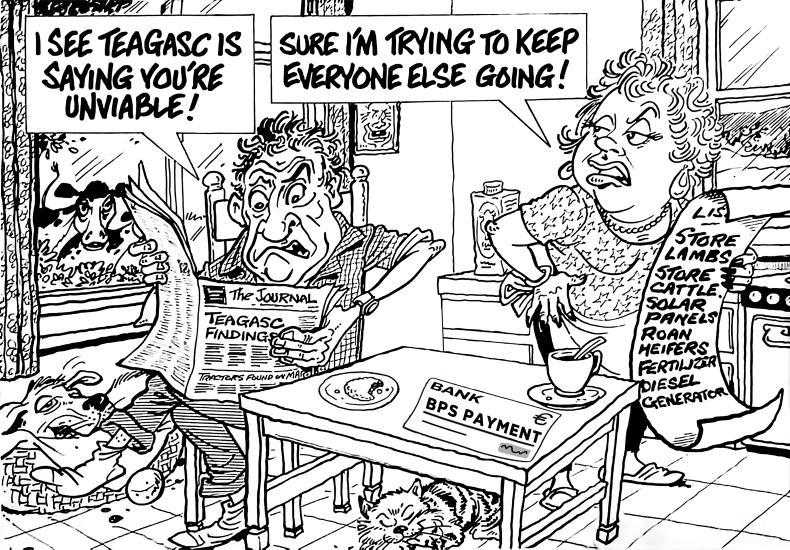Balance and fairness are what food and farming looks for from most commentators when talking about environmental challenges. When some attack the sector and discuss the negatives only, it often portrays farmers and farming in a very negative light. It often gives the impression that the industry is doing nothing when it comes to change.
Environmental Protection Agency (EPA) director general Laura Burke spoke at the Dublin Castle Food Vision 2030 forum late last week and in the short time she had, she spelled out all the negative water and greenhouse gas trends relating to agriculture. Shortly before her, An Taoiseach Micheál Martin said the farming sector was making strong proactive engagement with the climate change debate, unlike many of the other sectors. He said farmers take it seriously, whereas other sectors take a more generalist view on it.
While the EPA director general might be technically correct, the impression she creates is at complete odds with how Ireland is benchmarked as a food producer in terms of environment, food safety, quality and traceability to name a few. If we want to bring the industry on a journey of improvement, we must recognise what makes us great and where we fall short.
The ironic and very worrying issue is policy, markets and farmers are moving to change farming as we know it, without the full picture being available
Farmers get really frustrated when they see our food and farming sector portrayed in an unbalanced manner, often with no context or with no recognition for the significant ongoing investment in improving environmental sustainability on a weekly basis. There is a mental toll associated with the constant negative portrayal of agriculture that is hard to shoulder in any industry. Recognition of what is already done is crucial as the science catches up with policy.
The Food Vision 2030 conference overall was a pretty flat and uneventful gathering where there was little or no engagement or debate with those in attendance. We got a brief update from a lot of stakeholders but no great new detail.
Sustainability report
On Monday this week, Teagasc launched its sixth Sustainability report and, without doubt, it has improved immeasurably from when it was first launched. It now brings a much more holistic view on what sustainability is. The authors were at pains to point out that as the climate change science evolves, the report will become even better. For instance, there is no mention of carbon sequestration in the report because the science is not completed.

The ironic and very worrying issue is policy, markets and farmers are moving to change farming as we know it, without the full picture being available. Losing €400 per head to produce top-quality environmentally sustainable beef just won’t happen as farmers simply can’t carry that loss and remain in business. As Prof Gerry Boyle highlights again, science recognises biogenic methane differently – yet in Ireland we are lumping it in with reduction targets, the same as the rest of the greenhouse gases. This also frustrates farmers.
A positive element of the Teagasc report for me was that farmers were painted as environmentally proactive rather than as a stalling or reticent faction still in defensive mode.
Positives
The Teagasc report highlighted a host of positives that are all a work in progress. The carbon footprint of Irish milk is down, better milk solids means climate efficiency gains, farm level ammonia emissions are down significantly, and nitrogen use efficiency is up.
Some will argue that this is down to the 2022 fertiliser cost crisis, but there is clear evidence that farmers are not wasting this crisis in taking permanent steps to lower nitrogen use. On average, 48% of slurry is spread using low-emissions technology, while the use of lime has gone through the roof, meaning better soil nutrient usage in the coming years.
Of course there is work to do, but every sector has work to do. Of course there are laggards within the sector, but every sector has laggards.
All this is happening while the real and moral dilemma is that the number of chronically hungry people is approaching 2005 levels, with over 768m people not able to get sufficient daily nutrients. It would really make you question the current Irish and EU food and farming policy to take more and more land out of food production.






 This is a subscriber-only article
This is a subscriber-only article










SHARING OPTIONS: